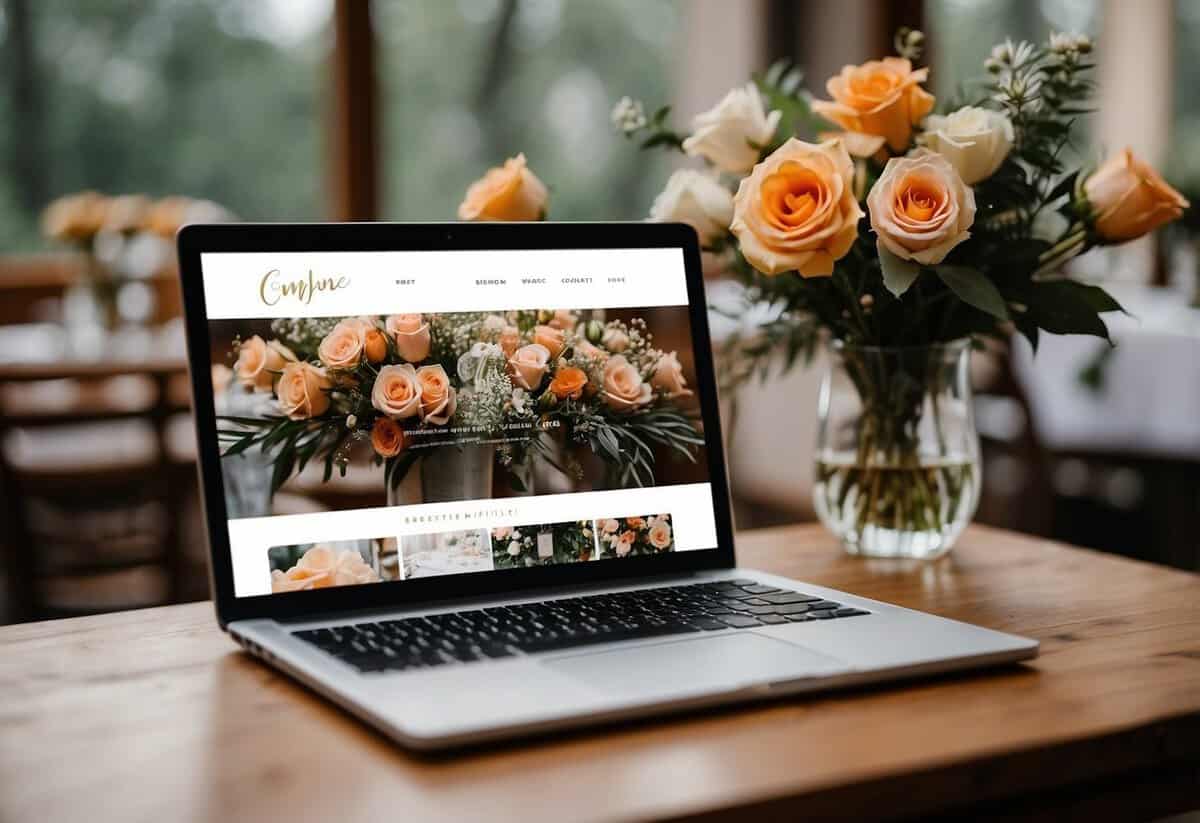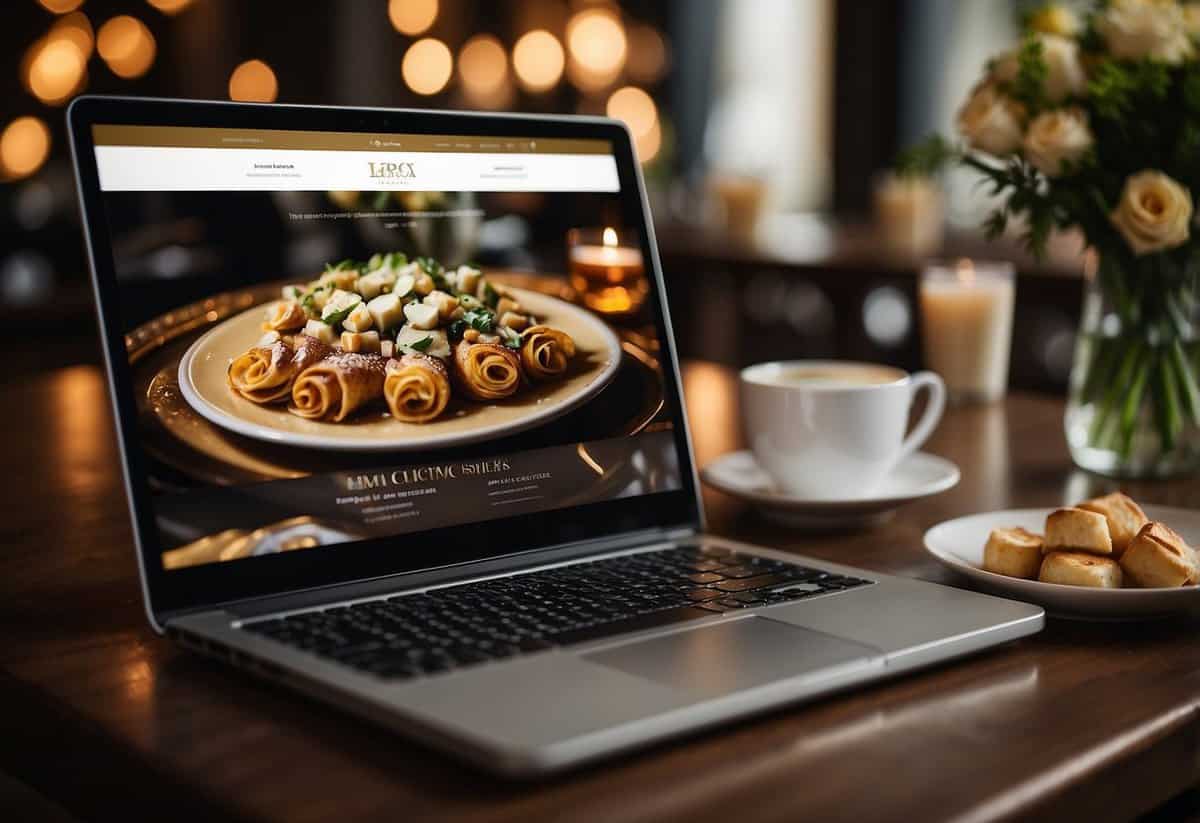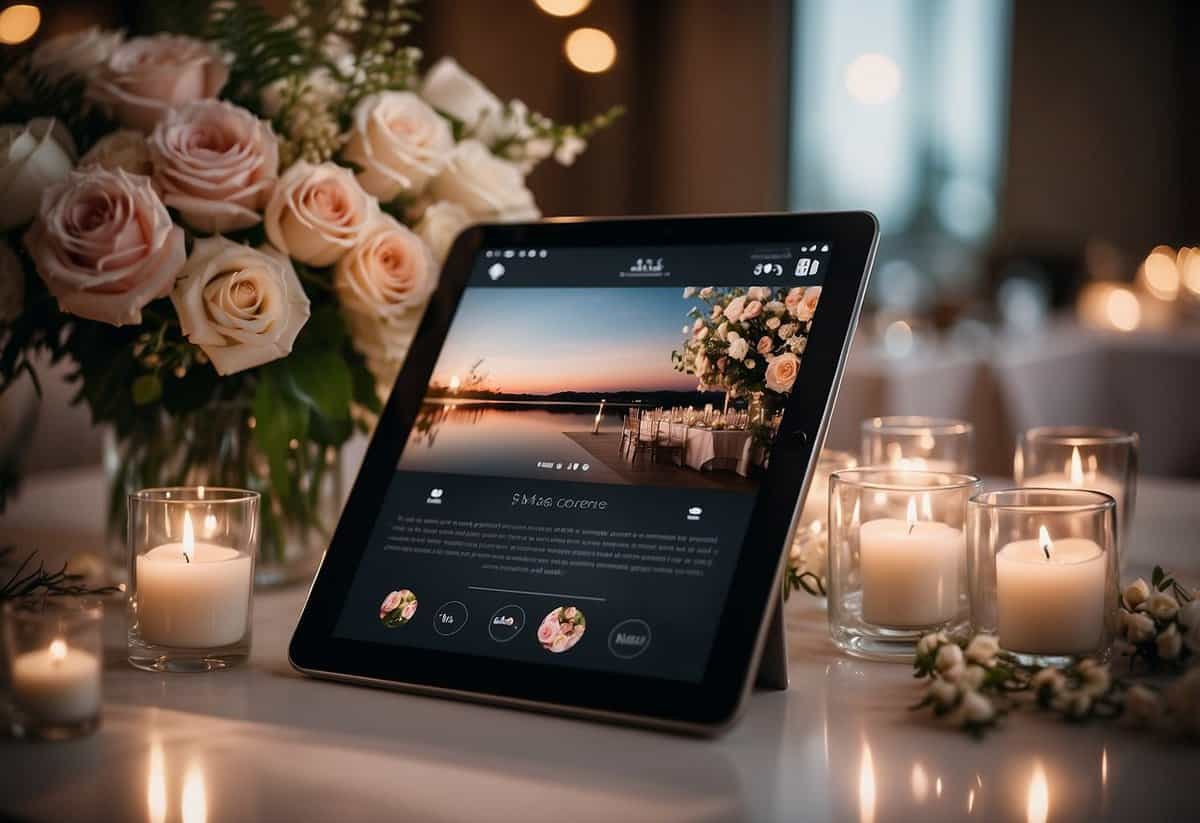Should You Put Your Menu on Your Wedding Website? Find Out the Pros and Cons
Wondering whether you should put your menu on your wedding website? Sharing your menu can be a great way to give guests a preview of the delicious food they can expect. Knowing the menu ahead of time helps guests with dietary restrictions plan accordingly, ensuring everyone has a good time. Yes, you should put your menu on your wedding website to help guests feel prepared and catered to.

Including the menu on your site also builds excitement. Guests will be eager to taste the dishes and it will add to the anticipation of your big day. Your wedding website is the perfect place to share this information since it’s the main hub for all wedding-related details.
Making your menu available online can also cut down on repetitive questions. Instead of fielding queries about dietary options, guests can simply refer to your website. This leaves you more time to focus on other aspects of wedding planning, making the whole process smoother.
For more tips on what to include on your wedding website, check out this guide on what to include on your wedding website and essential wedding website FAQs.
The Importance of Having a Menu on Your Wedding Website

Including a menu on your wedding website makes planning easier for you and your guests. It sets expectations for the meal and provides clarity about dietary restrictions and food choices.
Ease for Guests
When you list your menu online, your guests can see what will be served at the reception. This helps them plan ahead, especially if they have dietary restrictions or allergies. Knowing the meal options lets them decide whether they need to bring their own food or make special requests.
It also helps with seating arrangements. Guests may prefer sitting with others who have similar food preferences, making the meal more enjoyable for everyone. This way, you can create a better dining experience.
Additionally, providing the menu ahead of time can ease any anxiety some guests may have about the food. Whether they are picky eaters or have health concerns, knowing the menu can help them feel more comfortable and look forward to the event.
Preview of the Culinary Experience
The menu gives your guests a sneak peek of what to expect from the culinary experience. Describing the dishes in detail can build excitement and anticipation. If you are serving special or unique dishes, this can be a talking point for your guests leading up to the wedding.
It also showcases your taste and style. Whether you are having a fancy five-course meal or a casual buffet, the menu sets the tone for the entire reception. This helps your guests get a better feel for the event and creates a cohesive experience.
Providing descriptions of each dish can also help guests make informed choices about what they would like to eat. Highlighting local ingredients or special preparations can add an extra touch of thoughtfulness to your wedding planning, making the meal memorable for everyone involved.
What to Include in Your Online Menu

When putting your menu on your wedding website, it’s important to provide detailed information about meal options, beverage choices, and dietary accommodations. This ensures your guests are well-informed and can plan accordingly.
Meal Options and Descriptions
You should list all the meal options available at your wedding. Include clear descriptions of each dish, such as chicken breast with lemon herb sauce, vegetarian pasta primavera, or grilled salmon with dill.
Include whether your meal will be served buffet-style, plated, or as hors d’oeuvres. If you have a kids’ menu, mention that too. Clear descriptions help guests know what to expect and plan for their preferences.
Beverage and Bar Information
Your guests will appreciate knowing what drinks will be available. Detail whether you have an open bar or a cash bar. List the types of alcohol that will be served, like wines, beers, and cocktails.
You might also include any special drinks, like a signature cocktail. If non-alcoholic options are available, such as lemonade, iced tea, or club soda, be sure to list those as well.
Dietary Accommodations
It’s crucial to acknowledge any dietary restrictions. Make a note if you offer vegetarian, vegan, gluten-free, or nut-free meals. You might say something like “We can accommodate dietary needs upon request.”
Let your guests know who to contact with special dietary requests. This ensures everyone can enjoy the meal without worry.
Integrating RSVP Features with Your Menu

Putting your menu on your wedding website can make managing RSVPs smoother. Guests can make their meal choices and inform you of any dietary restrictions at the same time.
Seamless Meal Selections
Allowing guests to select their meals while RSVPing saves you from handling multiple forms or phone calls. Create a straightforward system where guests can choose from options like “beef,” “chicken,” or “vegetarian.”
You can use simple drop-down menus or checkboxes to make the process easy. Websites like WeddingWire offer features that let you include your full menu, so guests know exactly what to expect.
Tracking Dietary Restrictions
Collecting dietary restriction information during the RSVP process ensures that you can cater to all your guests’ needs. Adding a text box or a dropdown menu for guests to specify allergies or dietary preferences helps you avoid any last-minute surprises.
Platforms like The Knot offer ways for guests to submit these details easily. This way, you can work with your caterer to prepare suitable alternatives, ensuring everyone has an enjoyable meal.
Designing Your Menu Section

When designing your menu section for a wedding website, it’s important to focus on visual appeal, readability, and accessibility. Making it attractive and easy to read will enhance your guests’ experience, and ensuring it’s accessible will cater to everyone attending.
Visual Appeal and Readability
A visually appealing menu grabs attention. Use clear headings for each meal type like appetizers, entrees, and desserts. High-quality images of the dishes can make the menu more engaging.
Ensure the text is easy to read by choosing legible fonts and appropriate sizes. Stick to a neutral color scheme with a good contrast between text and background. This helps those with visual impairments read the menu without straining their eyes.
Consider layout carefully. Use bullet points or tables to organize information. This breaks down the text and makes it easier to scan. Avoid clutter by keeping descriptions concise but informative. Highlight special dietary options like vegetarian, vegan, or gluten-free, so guests can quickly find what suits them.
Keeping It Simple and Accessible
Avoid overloading your menu with too much information. Keep it short and to the point. Guests appreciate brevity and clarity, especially when navigating a website. Ensure that each menu item is clearly listed with a brief description of its ingredients.
Making your menu accessible is crucial. If possible, ensure that your website conforms to web accessibility standards. This includes having text descriptions for images, and ensuring the website can be navigated using a keyboard alone. It’s also important to ensure your design is wheelchair accessible where relevant, making it easy for all guests to understand and choose their meals.
By blending simplicity with accessibility, you ensure that your menu meets the needs of all your guests in the most effective way possible.
Additional Details to Enhance Guest Experience

Providing extra information like venue insights and transportation options can significantly improve your guests’ experience at your wedding. These details can help your guests feel more comfortable and prepared for the big day.
Venue and Location Insights
Adding venue and location details on your wedding website helps guests know exactly where to go. List the exact address and provide a link to an interactive map. Mention any special landmarks or signs to look out for. You might also include parking information to help guests find it easily.
If the venue has multiple entrances, specify which one guests should use. It’s also useful to mention if the location is outdoors or indoors, so guests can dress appropriately. Highlight any important facilities at the venue, such as restrooms or changing rooms, which can help guests plan their day better.
Accommodation and Transportation Options
Listing accommodation and transportation options ensures your guests know where to stay and how to get around. Offer recommendations for nearby hotels and consider negotiating hotel room blocks for discounted rates. Mention if the hotels provide shuttle services to the wedding venue.
If the venue is far from the main city or airport, provide details about available transportation, such as ride-share apps, taxis, or public transport options. Including a map showing these details can be very helpful. Highlight the weather forecast as well, advising guests on what to pack. Sharing this information makes it easier for your guests to plan their trip and enjoy your wedding to the fullest.



